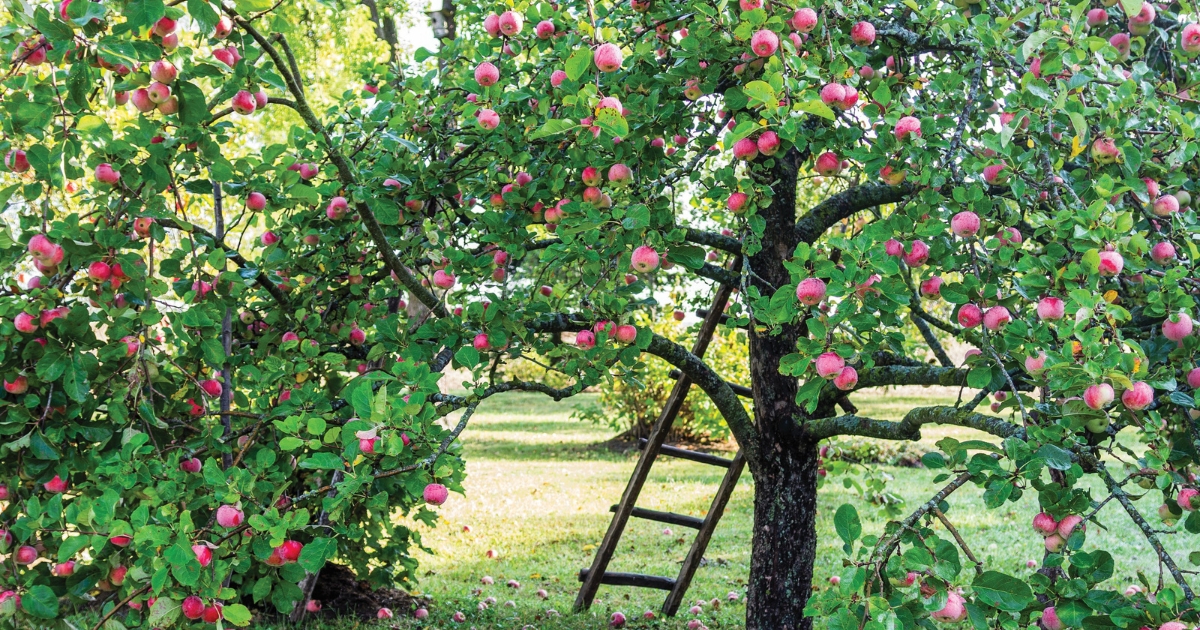Depending on the size of your garden, you can choose from a variety of fruit tree options that are suitable for smaller spaces. Some popular options include dwarf fruit trees, which are smaller in size. Another option is to choose fruit trees that are well suited for espalier, a technique where the tree is trained to grow flat against a wall or fence, taking up less space. If you garden on a small lot and want to enjoy fresh fruit from your own property, look for the following fruit trees:
Dwarf Apples
There are countless varieties to choose from. Be sure that your favourites will perform in your growing zone by checking with your supplier. We love Granny Smith apples, but they require a longer growing season than our zone 5 gardens afford.
Apples always seem like a miracle, and a productive apple tree can become a property-bound family heirloom. ‘Liberty’ is a good choice for organic growers given its strong disease resistance. A Liberty apple tree should be planted in full sun, in average to moist, fertile soil, within 165 feet (50 metres) of another apple tree of a different variety which blooms around the same time mid-season to ensure pollination. You can choose dwarf, semi-dwarf, or full-size trees depending on how much room you have to grow.
It is important to think about the climate, soil, and the amount of sunlight available in your garden when
choosing fruit trees to grow. Fruit trees need welldraining soil and at least 6 hours of direct sunlight per day in order to thrive. In addition, they need to be pollinated to produce fruit so make sure you are attracting lots of pollinators to your garden. –BC

Peaches and Nectarines
While not dwarf, per se, these trees lend themselves to severe pruning come early spring. Peaches are winter hardy to zone 6 (Toronto) and Nectarines to zone 4 (Montreal/Ottawa).
Most other fruiting trees will mature to about 21 feet (7 metres). If you have the space for one tree that will
produce fruit and some shade in years to come, consider a pear, plum or cherry tree.

Apples always seem like a miracle, and a productive apple tree can become a property-bound family heirloom. ‘Liberty’ is a good choice for organic growers given its strong disease resistance. A Liberty apple tree should be planted in full sun, in average to moist, fertile soil, within 165 feet (50 metres) of another apple tree of a different variety which blooms around the same time mid-season to ensure pollination. You can choose dwarf, semi-dwarf, or full-size trees depending on how much room you have to grow.
It is important to think about the climate, soil, and the amount of sunlight available in your garden when
Ben Cullen
choosing fruit trees to grow. Fruit trees need welldraining soil and at least 6 hours of direct sunlight per day in order to thrive. In addition, they need to be pollinated to produce fruit so make sure you are attracting lots of pollinators to your garden.














